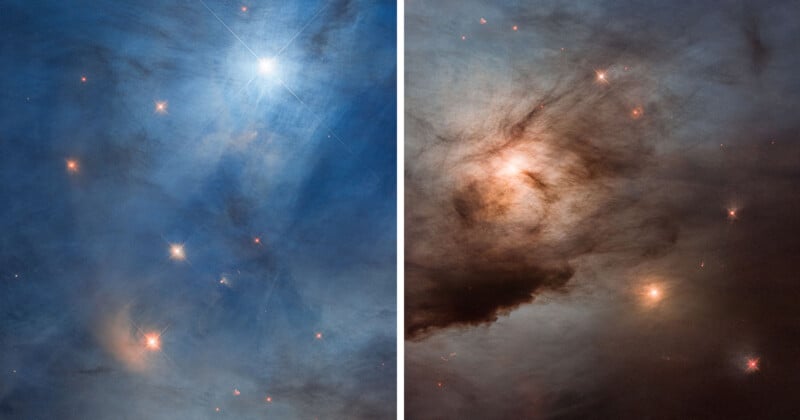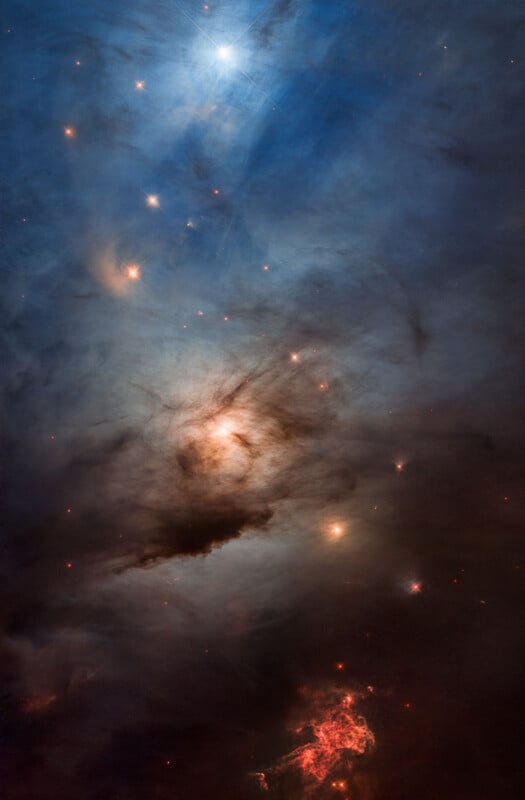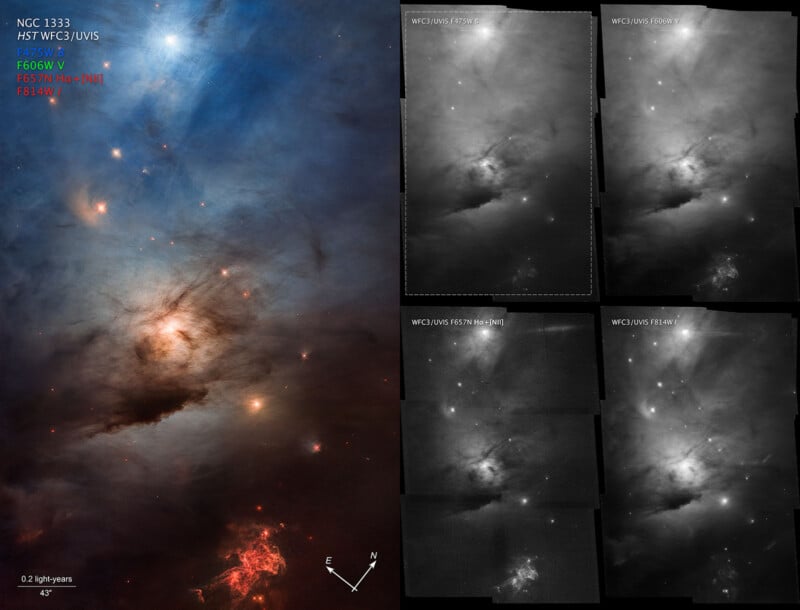Hubble Celebrates its 33rd Year with an Ethereal Look at a Nearby Nebula

The Hubble Space Telescope is celebrating its 33rd year in orbit around Earth. To celebrate this incredible milestone, the Hubble team has released an incredible photo of a nearby star-forming region, NGC 1333.
NGC 1333 is a reflection nebula in the constellation Pegasus. It’s located approximately 960 light-years from Earth.

Hubble’s incredible and colorful new photo demonstrates the venerable space telescope’s ability to capture images in light from ultraviolet to near-infrared. Hubble can peer through pitch-black clouds of fine dust to see NGC 1333’s hidden “effervescent cauldron of glowing gases.”
“To capture this image, Hubble peered through a veil of dust on the edge of a giant cloud of cold molecular hydrogen — the raw material for fabricating new stars and planets under the relentless pull of gravity,” writes the European Space Agency (ESA), a contributor on the Hubble project.
“This image underscores the fact that star formation is a messy process in a rambunctious universe,” the ESA adds.
Star formation is a major area of study for astronomers, and space telescopes like Hubble and Webb help scientists research how stars form within the clouds of dust scattered throughout most galaxies. Gas and dust can sometimes collapse under its gravitational attraction, which generates heat in the star-forming materials. This hot core can sometimes become a star, although not all the material becomes part of the eventual star — sometimes remaining dust form becomes planets, asteroids, or comets.
Stellar winds and turbulence help facilitate star formation by moving gas and dust around. These winds are displayed in Hubble’s latest image, disrupting the visible curtain of dust. “The fine dust scatters the starlight at blue wavelengths,” ESA writes. The large blue star at the top of the image is likely the culprit behind the stellar wind.
At the bottom of the photo, viewers are treated to a look at the dark nebula.
“Hubble captures the reddish glow of ionized hydrogen. It looks like the finale of a fireworks display, with several overlapping events,” explains ESA.

Outside the frame of view, newly forming stars generate jets of energy, which are propelled into the visible area. “These stars are surrounded by circumstellar discs, which may eventually produce planetary systems, and powerful magnetic fields that direct two parallel beams of hot gas deep into space, like a double lightsaber from science fiction films. They sculpt patterns on the hydrogen cocoon, like laser light show tracings. The jets are a star’s birth announcement,” ESA says.
The spectacular view of NGC 1333 may also show how the Milky Way galaxy looked when the sun and planets formed inside a dusty molecular cloud billions of years ago.
It’s an excellent time to look back at Hubble’s incredible history. The telescope was deployed into orbit around Earth on April 25, 1990, by NASA astronauts aboard the Space Shuttle Discovery.
Since then, Hubble has performed around 1.6 million observations of nearly 52,000 celestial targets. Even though satellites may be spoiling some of Hubble’s images, the space telescope has provided humanity an incredible wealth of knowledge and celestial beauty. Hopefully, the space telescope will be able to celebrate a 34th birthday next year.